Influ2 Insight: Buying Group Engagement And Personal Behavioral Scoring

Imagine a prospective client clicks on your ad, spends 120 seconds on your landing page, and visits your website twice in one week. This person is really interested in your offer. Unfortunately, you wouldn't know about it. This behavioral data usually remains in the dark funnel since you can’t identify this potential client.
Influ2 uses behavioral scoring to identify prospects and accounts that you wouldn’t have otherwise noticed. This scoring model is based on the behavioral and engagement data from its person-based ad campaigns and data from its tracking script that captures on-site engagement behavior.
Every engagement counts
Ad impressions, ad clicks, page visits and active time spent on the page are all important signals that your prospect is interested. Person-based Advertising reveals this behavioral data by telling you who saw your ad, who clicked on it, who visited your landing page and who stayed active on it for over 15 seconds, even if the person didn't leave their contact details via a lead form. These insights are aggregated through the following scores:
Personal Behavioral (PB) Score
Influ2 tracks and scores the online behavior of every target within a campaign. The ad engagement data for one specific individual is classified as the Personal Behavioral (PB) Score. A high PB score reveals which targets were most interested in and engaged with your campaign. Here's how it's calculated:
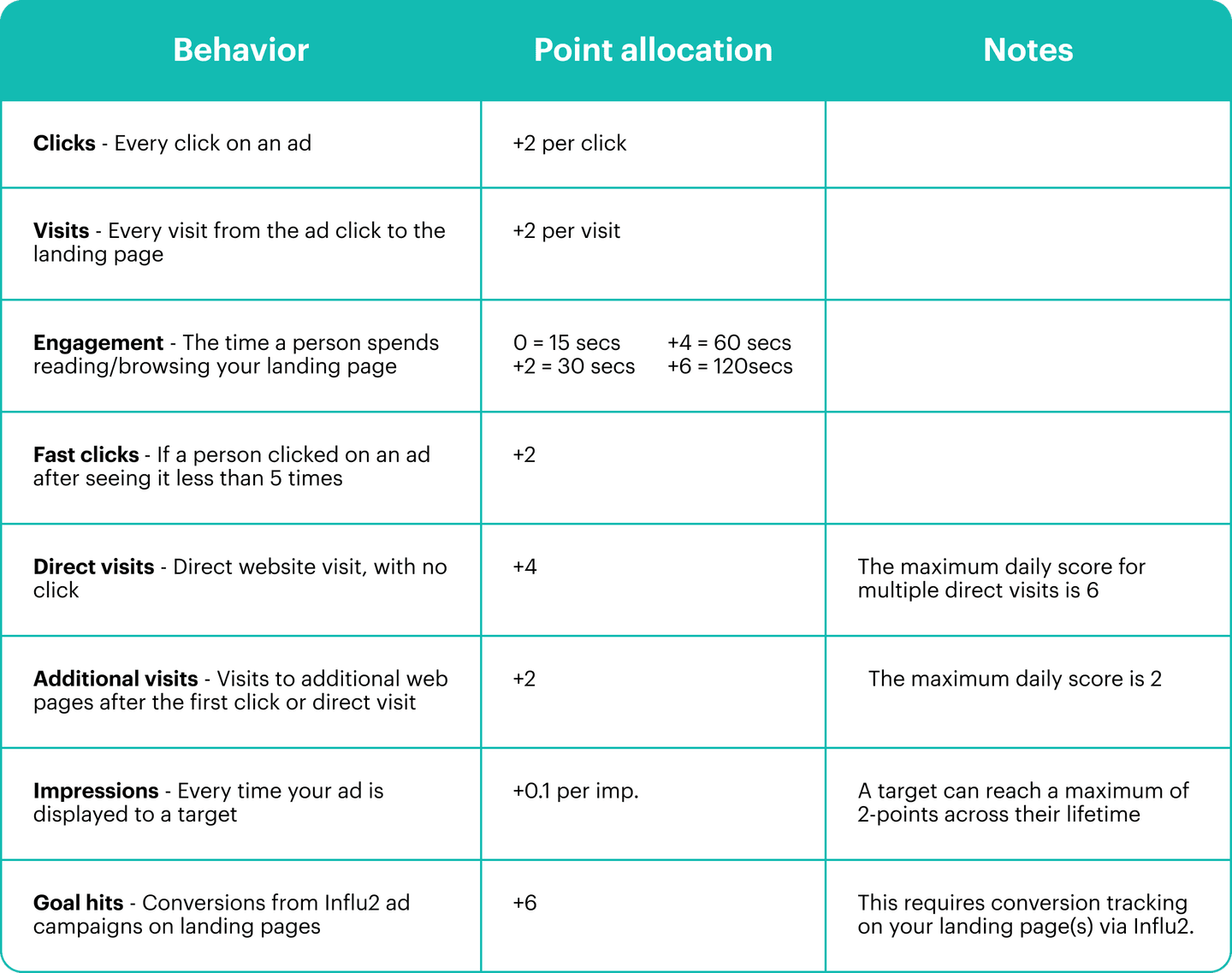
The Personal Behavioral Score is adjusted for decay. The effect from ad impressions and clicks decreases over time (e.g., in 7 days an ad impression will be worth 0.05 points instead of 0.1, similarly in 30 days a click will be worth 1 point, instead of 2 points).
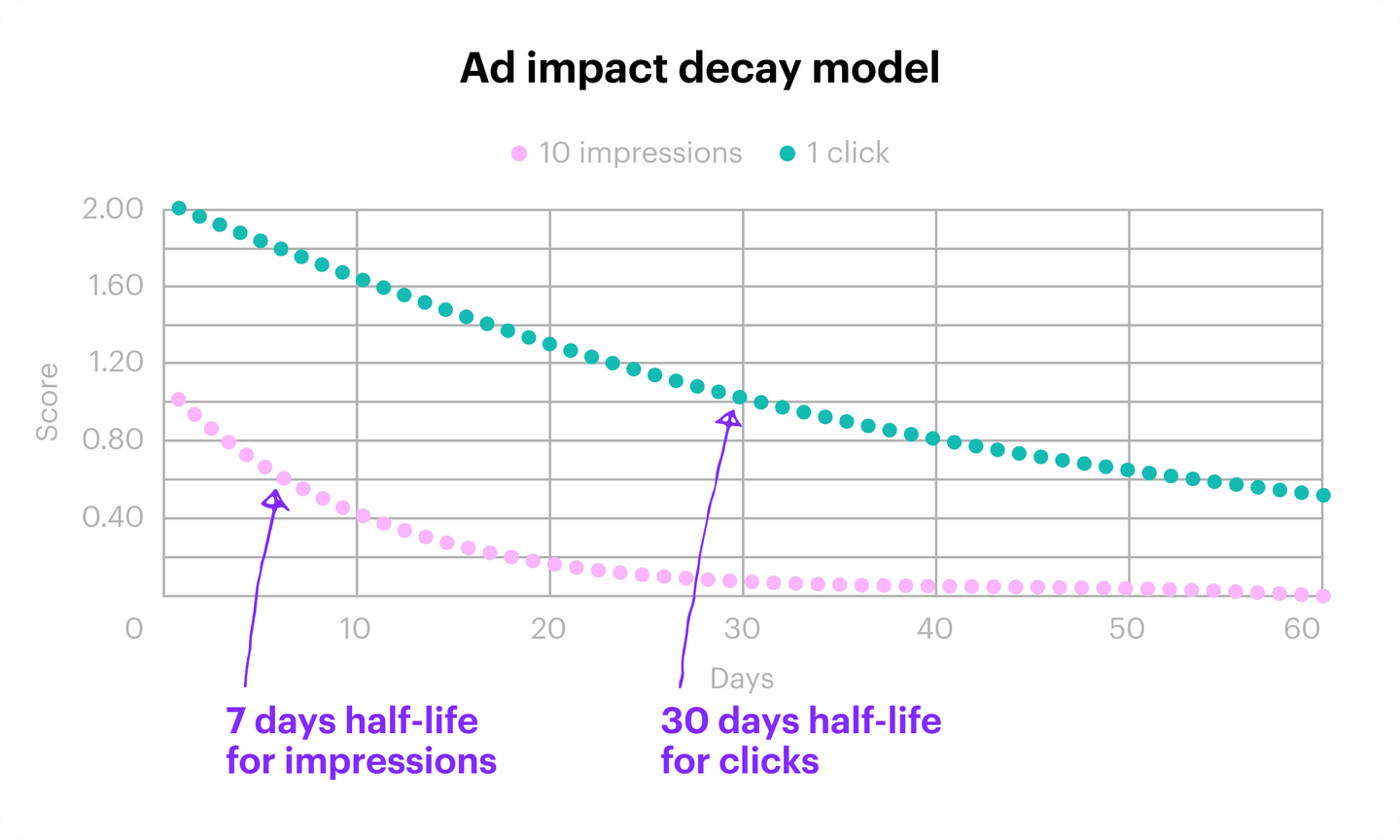
Buying Group Engagement (BGE) Score
The Buying Group Engagement (BGE) score reflects the conversion probability of an account in relation to its Influ2 activity. It makes engagement data obtained from Influ2 Person-Based Advertising campaigns more actionable, for you to rank/prioritize your target accounts more accurately for marketing and/or sales follow up.
The BGE score is based on ‘meaningful’ engagement activity across an account collectively and helps to identify engaged targets within the buying group.
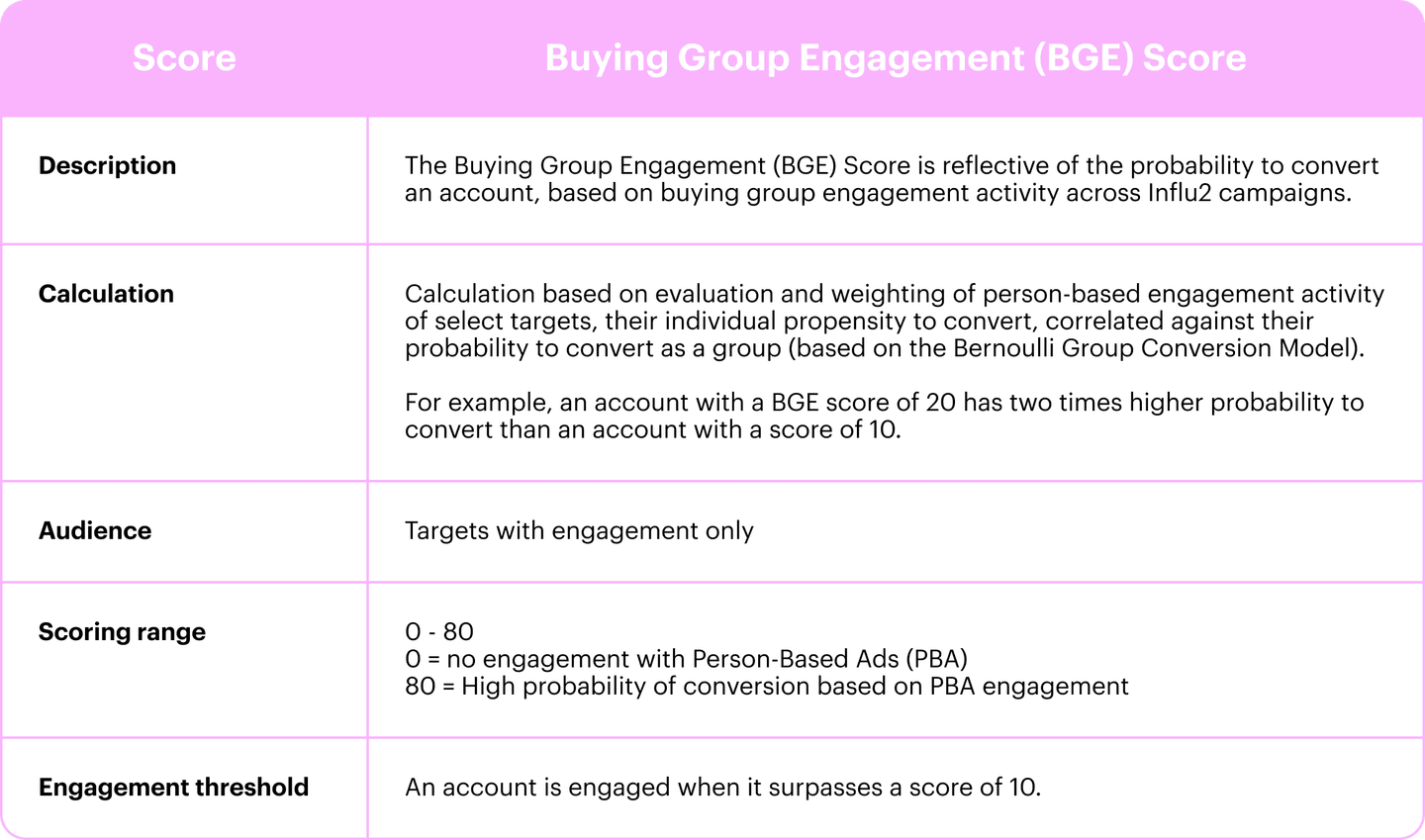
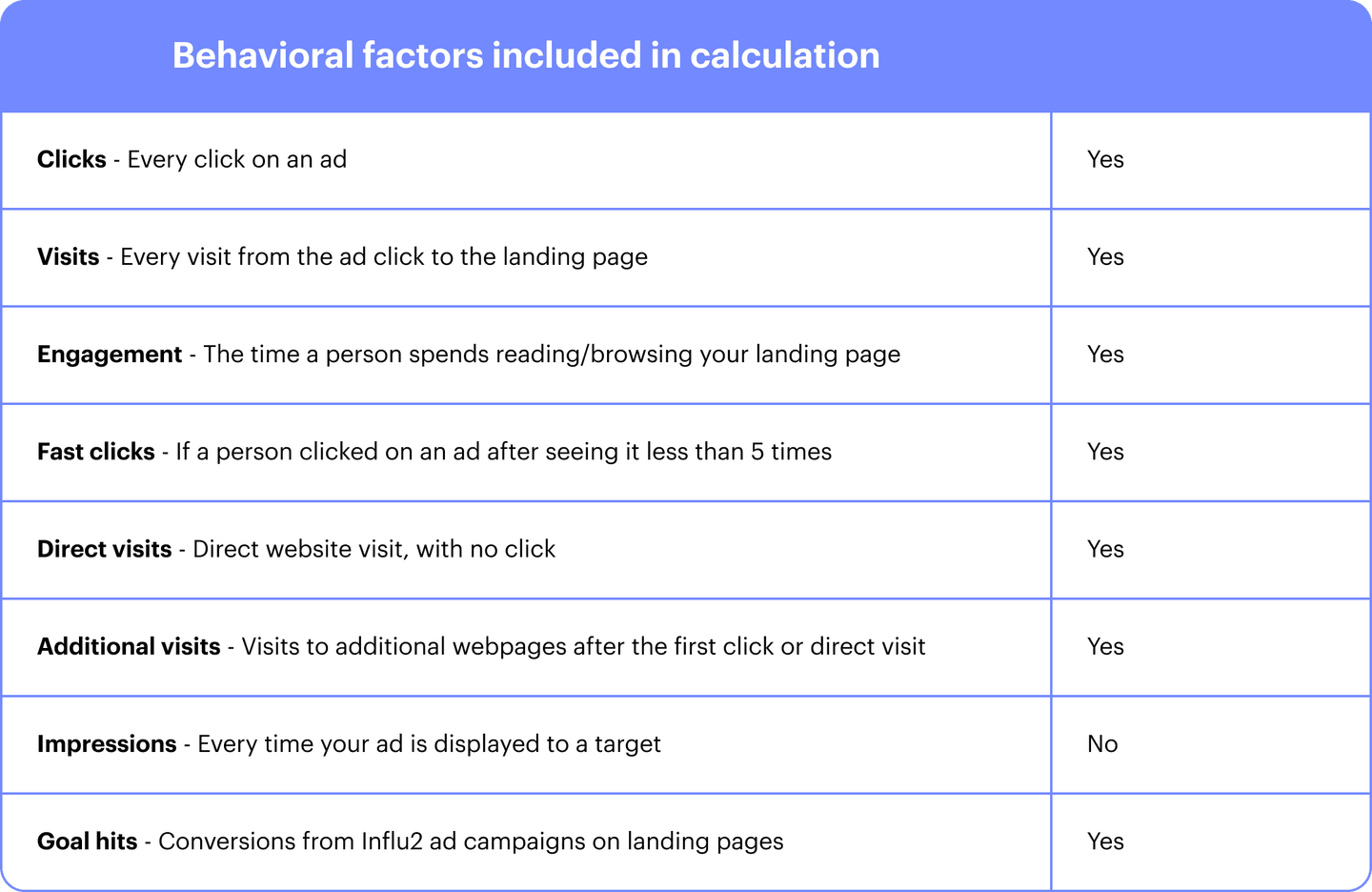
The BGE score indicates when key decision-makers and buying groups in your target accounts across your Influ2 campaigns are ready to be engaged by sales and marketing.
As with the Personal Behavioral score, the BGE score decays over time if there is no consistent engagement with buying group members. To maintain or increase the BGE score, we recommend that marketing activity continues to support sales conversations through the funnel to keep the buying group engaged.
The below graphic shows how to use the BGE score across your sales and marketing activities:
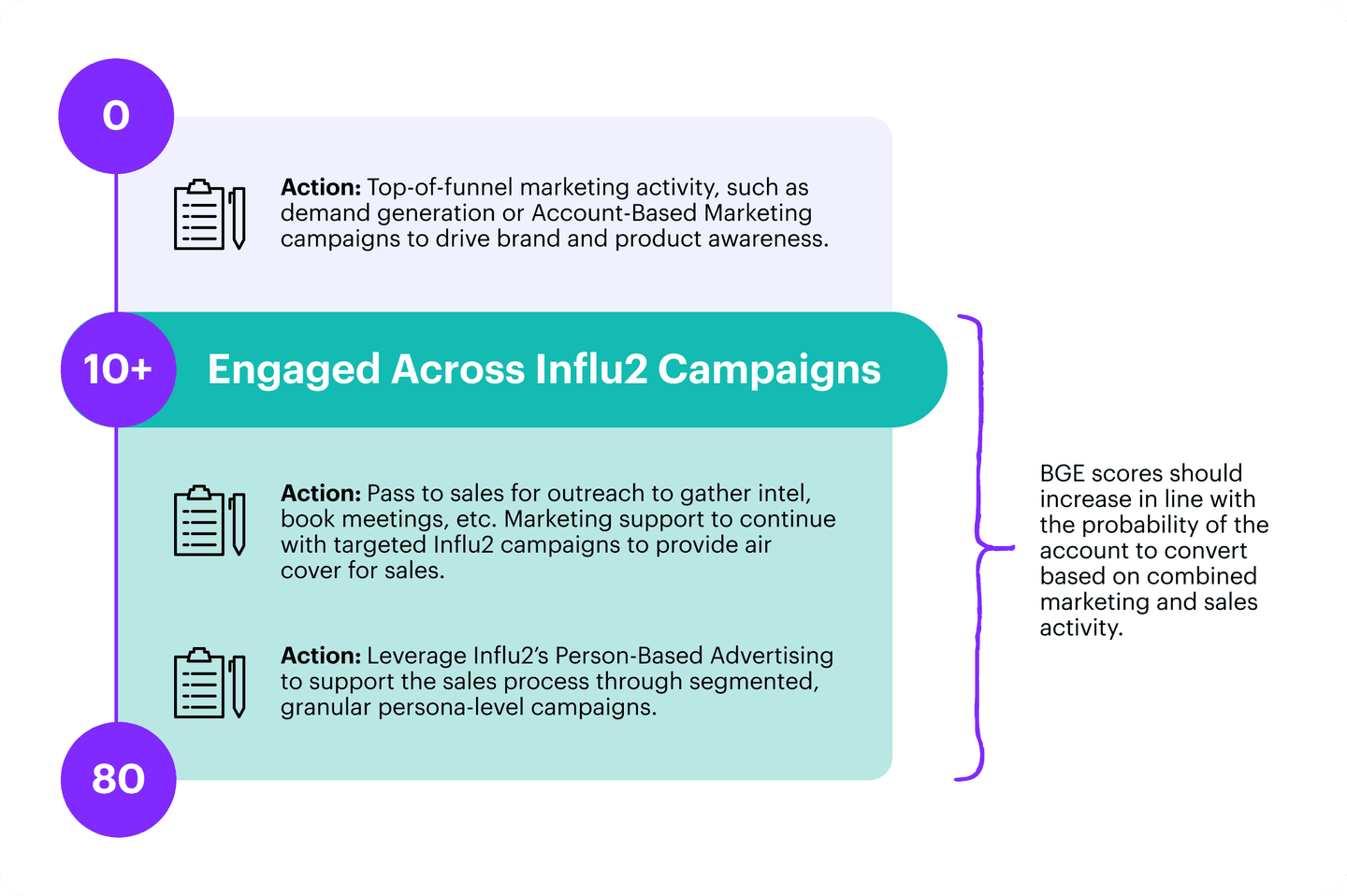
Tips to set up for success with Influ2
- Account for the decay. When a person sees your ad, clicks on it, or visits a page, it creates momentum. Capitalize on it. The longer you wait to react to an ad engagement, the lower the probability you'll get a response, since the ad impact decreases overtime.
- Use the BGE score to prioritize sales outreach to target accounts and use Personal Behavioral score for each target to customize relevant outreach.
- Use a snowball effect. You can increase a behavioral score for a target by running a sequence of campaigns* for the same audience. Each new campaign helps ‘snowball’ the interest you've created with the previous ads. We've found that showing ads to targets/accounts in an active deal cycle, gives the sales team the much-needed air cover and maintains overall engagement.
- Maximize your CTR and make sure your content is engaging. Based on our research, changing creative approximately every two weeks yields the optimal CTR and engagement.
- Install the Influ2 tracking code on your website (not just the landing page) to gather the first-party account-level intent and behavioral data from page visits across all your webpages to use in your campaigns.
- Use the BGE score as an indicator for the impact of Influ2 campaigns and track it to evaluate the success of marketing programs.
If running multiple campaigns these should be run in sequence, rather than in parallel. Campaigns run in parallel tend to be less effective as they can confuse the audience with multiple messages and result in less impressions and engagement.

A proud marketing generalist driven by a strong urge to Always Be Learning (ABL). Nirosha has a career across many marketing disciplines and industries spanning close to 15-years. Now she is taking on the challenge to build out the evolution of Account-Based Marketing to Buying Group Marketing.


